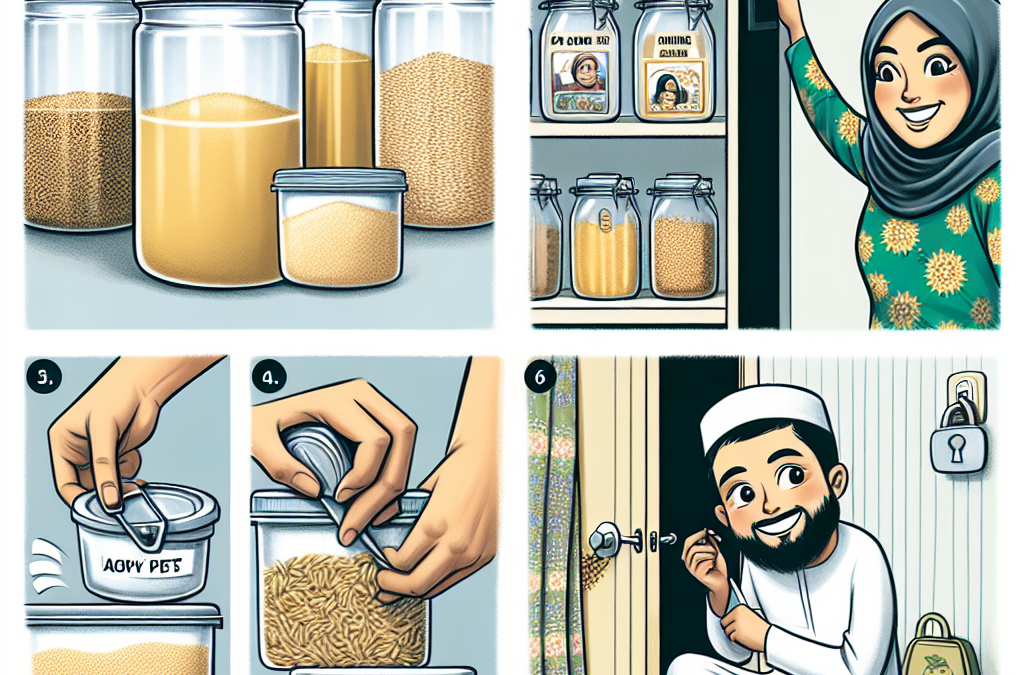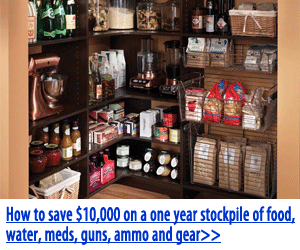Assess Your Storage Options
Choosing the Right Containers
When I first began to store grains, I learned quickly that the container matters just as much as the grain itself. You’ll want to find airtight containers that pets can’t access. Glass jars or heavy-duty plastic bins with tight-fitting lids are my go-tos. They not only keep my grains fresh but also deter any sniffing noses from getting too curious!
I also recommend avoiding flimsy packaging. I once tried to store rice in its original paper bag, and my dog thought it was an invitation to party! So, invest in robust storage solutions that can withstand the nibbles and pokes from your furry friends.
Lastly, be mindful of the size. Too large, and it’ll be a hassle to lift and store; too small, and you’ll find yourself constantly refilling. It’s all about balance, folks!
Finding Suitable Locations
Location, location, location! You wouldn’t believe how many times I had to rethink my pantry layout because of my pets. Storing grains out of their reach is essential. High shelves or cabinets are great options, provided your pets aren’t skilled climbers—looking at you, adventurous cats!
Consider also the temperature and humidity of your storage space. Grains should be kept in a cool, dry place to maintain their quality. I once had a bout of humidity in our kitchen that ruined some oats, so be sure to monitor the conditions, especially during summer months.
Finally, keep frequently used grains in a readily accessible area, away from your pets’ prying eyes. I use a tiered shelf to separate food items—I can grab what I need, and the critters stay out of trouble!
Labeling for Safety
Believe it or not, I learned the hard way about the importance of labeling. Having different types of grains can be confusing, especially when your brain is foggy from a long day. I now make it a point to label my containers clearly—what’s in there and the date I stored it. This keeps everything organized and makes sure I use the oldest grains first!
Also, I use pet-safe labels. If you’re storing grains that could be harmful to pets, such as certain dried beans, I make a big point to mark them clearly so no mix-ups happen. It takes an extra step, but trust me; it’s worth it!
Don’t forget decorative labeling! It adds a bit of personality to my pantry and isn’t just functional; it makes things pop! It’s all about making my kitchen both practical and fun.
Maintain Hygiene and Cleanliness
Regular Cleaning Routine
Keeping your grain storage area clean is crucial, especially with pets around. For me, it’s a bi-weekly affair. I wipe down containers and check for any signs of pest atau pet access. Nothing worse than finding a trail of rice left by a mischievous cat, right?
I also make it a habit to sweep the area to eliminate any crumbs that might attract little furry friends. Sometimes, I even throw a little party for myself by playing music while tidying up—it makes the chore a bit more enjoyable!
Once in a while, I do a deep clean of my storing area to keep it fresh. Disinfecting surfaces helps ensure that the grains don’t pick up any unwanted smells or bacteria. A clean space means happy, healthy grains!
Monitoring for Pests
As much as I love my pets, I always have to be conscious of pests too—especially since they often raid my grain store! Regularly checking for signs of pests is vital. I look for tiny droppings, webbing, or holes in packaging. I refer to it as my “pest patrol” time!
If I do notice any unwanted guests, I alter my storage methods immediately. I might switch to a different container or change location. There’s no better way than being proactive to keep the little critters at bay.
And don’t underestimate the power of keeping things clean. Pests love debris and crumbs, so staying on top of cleanliness is always in style. My motto: a clean home is a pest-free home!
Pet Safety Measures
At the end of the day, I care about my grains but care even more about my pets. Ensuring they can’t get into any stored grains is priority number one. I always check that all my containers are sealed tight and stored up high.
Get Whole Wheat Flour, Grains and Milling Supplies – CLICK HERE
I also keep certain grains out of reach of my curious pets. For example, some grains, like raw beans, can be harmful. This is where my labeling comes into play—keeping track of safe versus unsafe food allows me to guide my furry friends safely.
It might sound like extra work, but I also do a little pet education. I’ve trained my pets with commands to stay away from the food prep areas. It’s not foolproof, but my determination has kept me pretty successful in preventing grain raids!
Being Prepared for Emergencies
Have a Plan for Spills
Spills happen, right? Whether it’s my clumsiness or an overly enthusiastic pet, when grains spill, it can turn into chaos. That’s why I always keep a handheld vacuum nearby, just in case. Cleaning up quickly prevents both pests and tempting those animal friends of mine!
I always keep a quick-dry cloth ready. Whenever I spill, I immediately dab it up to minimize a mess! The less grain on the floor means less opportunity for a stealthy snack getaway by my little roommate.
In case of bigger spills, I have a designated spot to clean it all up, so I don’t spread the grains around. Organization is key to handling the mess efficiently. Teamwork with the pets may be a little much, but I can’t help but smile at their guilty little faces as they watch me clean!
Emergency Contacts Ready
I believe that having a vet’s contact number handy during emergencies is essential. Luckily, I’ve been able to find a good vet who specializes in pet emergencies—they have my back in case of accidental grain ingestion.
I keep this number and other pertinent info on my fridge. That way, it’s easy to find, even when I’m not in a clear headspace. Preparedness is key for both pet and pantry safety!
And of course, always keep any necessary medication on hand. While I hope I never have to use it, I’d rather be safe than sorry. Plus, it sets my mind at ease just knowing I’m ready for anything that might happen.
Stay Informed and Updated
Staying in the loop about pet-safe grains is essential. I regularly read articles and watch videos about pet safety concerning foods. Knowledge is power, and being informed means I can make better choices for my pets.
Additionally, discussing with other pet owners helps broaden my understanding of any risks or important information to know. I have a neighborhood pet group, and we share tips often. It’s always a good time, and I walk away with so many new insights!
Lastly, I often check for any recalls on grains. Companies will often issue these, and being vigilant helps keep everyone safe. Trust me; there’s nothing worse than a surprise mishap when it comes to pet safety!
FAQs
1. What types of containers are best for storing grains safely?
Airtight containers like glass jars or heavy-duty plastic bins with tight-fitting lids are the best. They keep grains fresh and away from curious pets.
2. How can I keep my pets from accessing my stored grains?
Store grains on high shelves or inside cabinets that are out of reach of your pets. Ensure containers are securely sealed to avoid accidental access.
3. What should I do if there’s a spill of grains?
Clean up spills immediately to avoid attracting pests. Use a handheld vacuum to tidy quickly and a cloth to soak up any residue!
4. Are there specific grains that are harmful to pets?
Yes, grains like raw beans can be harmful to pets if ingested. Always label your containers to know which grains are safe and which are not.
5. How often should I check my grain storage for pests?
I recommend checking regularly—about every couple of weeks. Keeping an eye out for any signs of pests helps you address issues before they become larger problems.
Get Whole Wheat Flour, Grains and Milling Supplies – CLICK HERE
Related Content
Auto Amazon Links: No products found.





